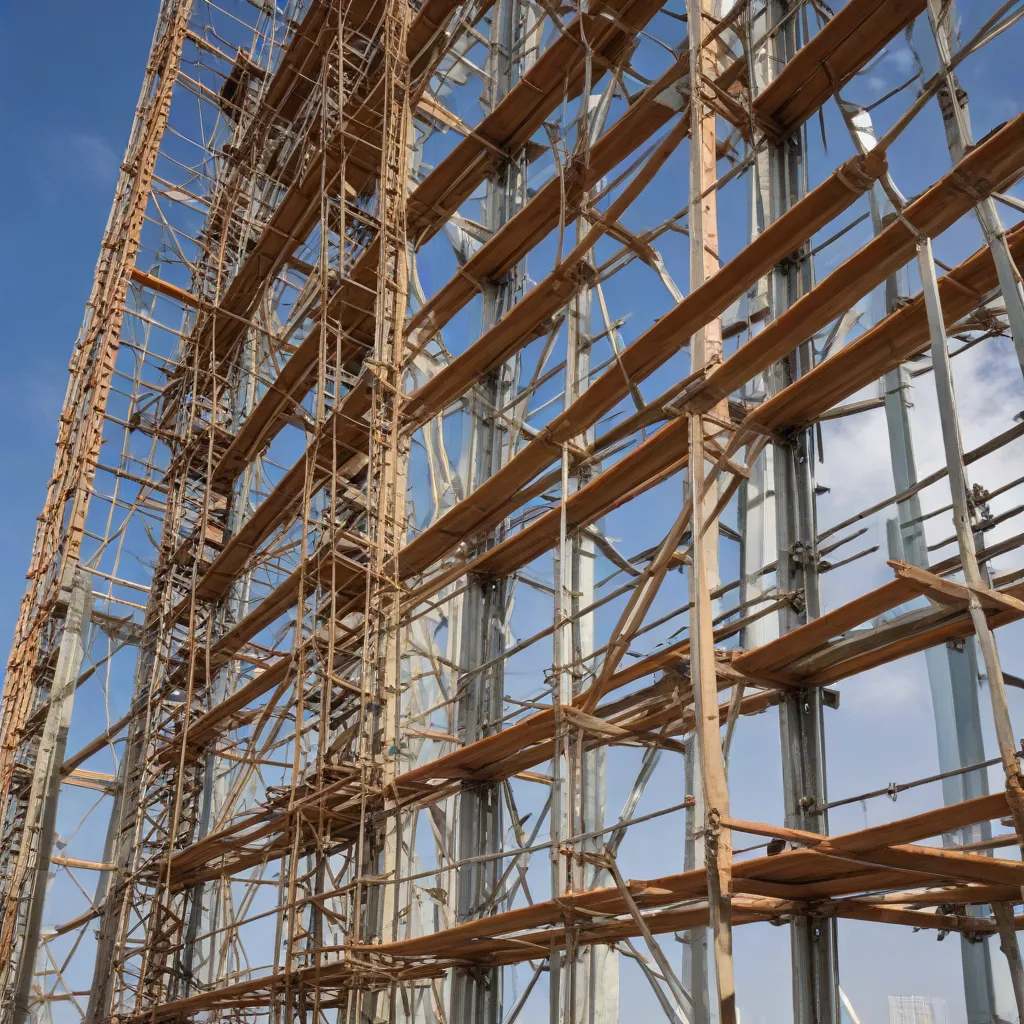
Navigating the Scaffolding Landscape in the UAE
Scaffolding is the backbone of construction projects in the United Arab Emirates (UAE), providing a critical platform for workers to safely access and execute various tasks at height. As the construction industry in the UAE continues to thrive, ensuring compliance with local scaffolding regulations and implementing best practices is paramount to maintaining a safe and productive work environment.
Regulatory Compliance: The Foundation of Scaffolding Safety
The UAE has a comprehensive set of regulations governing the use of scaffolding in construction projects. The UAE Occupational Health and Safety (OHS) regulations outline specific requirements for the design, installation, and maintenance of scaffolding systems. These regulations are strictly enforced by local authorities, and construction companies must ensure full compliance to avoid penalties and potential project delays.
One of the key requirements is the mandatory use of scaffold-specific personal protective equipment (PPE), such as harnesses, lanyards, and hard hats. Employers are responsible for providing workers with the necessary PPE and ensuring they are properly trained in its use. Failure to comply with these regulations can result in heavy fines and even the shutdown of construction sites.
Additionally, the UAE’s Building Code outlines specific standards for the design and installation of scaffolding systems, including load-bearing capacities, access points, and safety features. Construction companies must work closely with licensed scaffolding contractors and engineers to ensure their scaffolding solutions meet these stringent requirements.
Cost Management: Balancing Safety and Efficiency
Implementing a robust scaffolding system can be a significant investment for construction companies in the UAE, but the long-term benefits outweigh the initial costs. By prioritizing safety and compliance, construction firms can avoid costly fines, project delays, and potential legal issues, ultimately improving their bottom line.
When budgeting for scaffolding, construction companies should consider the following cost factors:
-
Material and Equipment Costs: The selection of scaffolding materials, such as steel, aluminum, or bamboo, can significantly impact the overall cost. Additionally, the necessary safety equipment, like harnesses and fall protection systems, must be factored into the budget.
-
Labor and Installation Costs: Hiring experienced scaffolding installers and ensuring proper training for workers can add to the overall project costs. However, these investments can pay off by reducing the risk of accidents and improving productivity.
-
Maintenance and Inspection Costs: Regular maintenance and inspections of the scaffolding system are crucial to ensure its structural integrity and compliance with safety standards. These ongoing costs should be accounted for in the overall project budget.
-
Rental or Ownership Costs: Construction companies must decide whether to rent or own their scaffolding equipment, considering factors such as project duration, storage space, and the need for flexibility in their scaffolding solutions.
By carefully managing these cost factors and leveraging the expertise of local scaffolding specialists, construction companies in the UAE can optimize their budgets while prioritizing worker safety and regulatory compliance.
Innovative Scaffolding Practices in the UAE
The UAE’s construction industry has witnessed the rise of innovative scaffolding solutions that not only meet safety standards but also enhance efficiency and cost-effectiveness. These cutting-edge practices are transforming the way construction projects are executed in the region.
Modular Scaffolding Systems
One of the most prominent trends in the UAE’s scaffolding industry is the adoption of modular scaffolding systems. These pre-engineered, interlocking components allow for faster installation and disassembly, reducing labor costs and project timelines. Additionally, modular systems offer greater flexibility in adapting to various site conditions and project requirements, making them a popular choice among construction companies.
| Modular Scaffolding Advantages | Cost Estimates (USD) |
|---|---|
|
|
Suspended Scaffolding Systems
For high-rise construction projects, suspended scaffolding systems have become increasingly popular in the UAE. These platforms, suspended by ropes or cables, allow workers to access hard-to-reach areas safely and efficiently. Suspended scaffolding systems often feature advanced safety features, such as built-in fall arrest systems and automated ascent/descent mechanisms, further enhancing worker protection.
| Suspended Scaffolding Advantages | Cost Estimates (USD) |
|---|---|
|
|
BIM-Integrated Scaffolding Planning
The UAE’s construction industry has embraced the power of Building Information Modeling (BIM) to enhance the planning and execution of scaffolding systems. By integrating BIM software into their workflow, construction companies can create detailed 3D models of their scaffolding solutions, allowing for virtual visualization, clash detection, and optimized layouts. This BIM-driven approach not only improves safety and compliance but also enables more efficient material procurement and reduced waste.
| BIM-Integrated Scaffolding Advantages | Cost Estimates (USD) |
|---|---|
|
|
By embracing these innovative scaffolding practices, construction companies in the UAE can enhance worker safety, improve project efficiency, and maintain compliance with local regulations, ultimately contributing to the sustained growth and development of the region’s thriving construction industry.
Conclusion
Scaffolding compliance in the UAE is a crucial aspect of construction safety and project success. By understanding the local regulations, implementing cost-effective strategies, and adopting innovative scaffolding solutions, construction companies in the UAE can ensure the well-being of their workers, minimize project disruptions, and positively impact the industry’s overall performance.
As the UAE continues to shape its construction landscape, the importance of scaffolding compliance will only grow. By staying ahead of the curve and leveraging the expertise of local scaffolding specialists, construction companies can solidify their position as industry leaders, contributing to the nation’s ongoing progress and development.
To learn more about Sher Ahmed Scaffolding, a leading provider of scaffolding services in the UAE, visit our website and explore how we can assist you in navigating the complexities of scaffolding compliance and delivering safe, efficient, and cost-effective construction projects.
